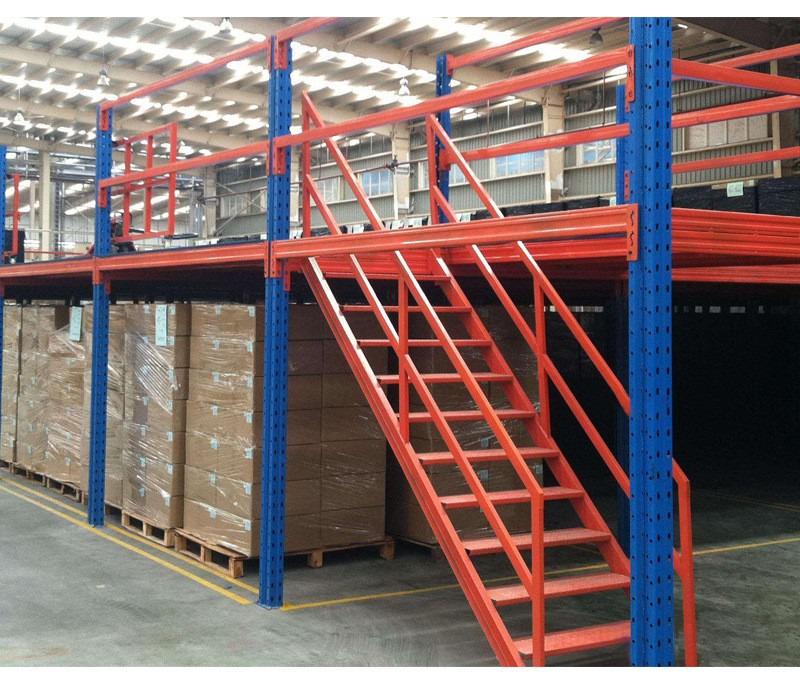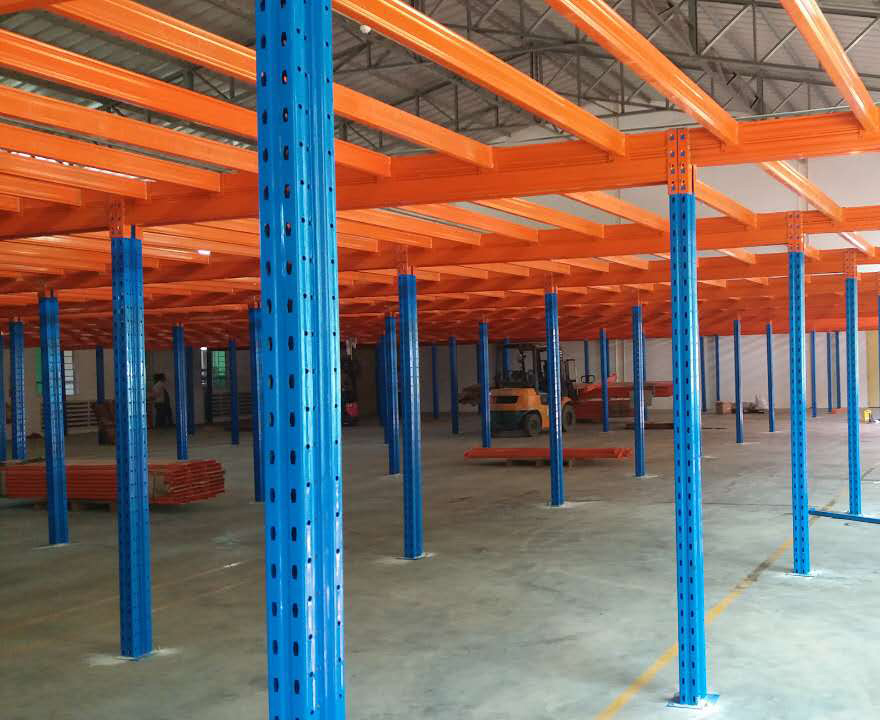Pallet rack beams are the indispensable horizontal support members in a warehouse storage system, the critical link between the upright frames and the stored load. They are the workhorses of the warehouse, directly responsible for bearing the weight of palletized goods. Understanding the nuances of pallet rack beams—from their standard sizes and unique designs like teardrop pallet rack beams to the intricacies of finding both new and used pallet rack beams for sale near me—is essential for any warehouse manager, operations director, or business owner looking to optimize their storage infrastructure. A failure in a beam can lead to catastrophic collapse, making informed selection and procurement not just a matter of efficiency, but of paramount safety. This comprehensive guide will navigate you through everything you need to know, ensuring you can make a confident and secure purchase for your operational needs.

When searching for pallet rack beams for sale, the first and most critical specifications you'll encounter are their dimensions and weight capacity. Getting this right is non-negotiable.
Key Dimensions:
Length: This is the clear horizontal distance between the two upright frames. Standard pallet rack beams sizes for length typically range from 36 inches to 144 inches (3 to 12 feet), increasing in 6-inch increments. The choice depends entirely on your pallet size. Beams should be slightly longer than the pallet to provide adequate support without being so long that they waste space or risk deflection.
Height (or Depth): This is the vertical face of the beam, usually measured in inches. Common heights are 3", 4", 5", and 6". A taller beam face generally indicates a higher load capacity because more steel is used in its construction.
Gauge: This refers to the thickness of the steel used. It is measured by a gauge number, where a lower number means thicker, stronger steel. For example, 12-gauge steel is significantly thicker and stronger than 16-gauge.
Capacity and the Load Deflection Rating:
The capacity of pallet rack beams is not a single number. It is intrinsically tied to their length. A key principle to remember: a beam’s capacity decreases as its length increases. A 96-inch (8-foot) beam will have a much lower maximum weight rating than a 48-inch (4-foot) beam of the same height and gauge.
Manufacturers provide capacity charts that list the Uniformly Distributed Load (UDL) rating for each beam model at every standard length. Crucially, this rating includes a maximum deflection limit (usually L/180, meaning for a 180-inch beam, a maximum of 1 inch of sag is allowed at full load). Never exceed the manufacturer's stated UDL capacity for your specific beam length.
Step-Beam vs. Box-Beam Designs:
Step-Beam (Open-Back): The most common type, especially in teardrop systems. Their C-shaped cross-section makes them lightweight and easy to handle. They are cost-effective and suitable for most standard warehouse applications.
Box-Beam (Closed-Back): These have a rectangular, hollow cross-section. They are much stronger and more rigid than step-beams, offering higher capacities for the same length. They are ideal for heavy-duty applications, high-capacity requirements, or in environments where extra rigidity is desired for safety.
When browsing for pallet rack beams for sale, you will most frequently encounter the teardrop design. This has become the industry standard for roll-formed rack systems due to its perfect balance of strength, safety, and ease of use.
The name teardrop pallet rack beams comes from the distinct teardrop-shaped holes punched at regular intervals along the face of the beam. These holes are precisely engineered to engage with the hooks of the safety lock on the upright frame's connectors.
Why are Teardrop Pallet Rack Beams so popular?
Safety and Security: The connection is designed to be secure. Once the beam end connector is hooked into the teardrop hole, it locks into place, preventing accidental dislodgement from upward lift or impact. This creates a robust and reliable frame structure.
Ease of Installation and Adjustment: Perhaps their biggest advantage is tool-less adjustment. To install or relocate a beam, workers simply hook the connectors into the desired teardrop holes on the upright. A slight downward tilt locks it in place. This allows for incredibly fast setup and easy reconfiguration of shelf heights as inventory needs change, without needing wrenches or other tools.
Versatility and Compatibility: The teardrop pattern has become so ubiquitous that it ensures a high degree of compatibility. Beams from one manufacturer can often (though not always) be used with uprights from another, as long as the teardrop pattern and column spacing are compatible. This is a huge benefit when looking for used components or expanding an existing system.
If your warehouse uses a roll-formed rack system, chances are you are already using teardrop pallet rack beams.
The market for pallet rack beams is vast, and the right supplier for you depends on your budget, timeline, and specific requirements. Here are the primary channels to explore:
1. New Equipment Distributors:
These are authorized dealers for major manufacturers like Ridg-U-Rak, ARACK, Steel King, or UNARCO. They offer brand-new, warrantied products.
Pros: Highest quality, full compliance with current safety standards (e.g., RMI), custom options, warranty protection, and expert technical support.
Cons: Highest cost.
Best for: New facilities, high-capacity requirements, strict corporate procurement policies, and applications where guaranteed specification and safety are the top priorities.
2. Used Pallet Rack Suppliers:
A massive industry exists for used pallet rack beams. These suppliers purchase entire systems from closing warehouses, inspect them, refurbish them (straightening, cleaning, repainting), and resell them.
Pros: Significant cost savings (often 40-60% less than new), immediate availability from inventory, and environmental sustainability (reusing steel).
Cons: Limited selection of specific sizes and finishes, potential for minor cosmetic imperfections, and no manufacturer's warranty (though reputable suppliers offer their own limited warranty). It is crucial to inspect for bends, cracks, or excessive rust.
Best for: Budget-conscious businesses, expanding existing systems with matching components, and temporary projects.
3. Online Marketplaces and Auctions:
Websites like eBay, Facebook Marketplace, and Craigslist, as well as industrial auction sites, are full of listings for pallet rack beams for sale. This can be a source for incredible deals, especially if you are buying a large quantity locally.
Pros: Potentially the lowest prices, especially from private sellers.
Cons: High risk. No warranty, often no inspection, and buyers must handle all logistics like loading and transportation. You must be highly knowledgeable to avoid purchasing damaged or mismatched components.
Best for: Savvy buyers who can thoroughly inspect items on-site and handle the logistics themselves.

The search query "pallet rack beams near me" or "pallet rack beams for sale near me" is incredibly common for a very good reason: logistics. Pallet rack beams are long, heavy, and expensive to ship. Finding a local supplier offers immense advantages:
Dramatically Lower Shipping Costs: Freight charges for long metal beams can easily exceed the cost of the beams themselves. Sourcing locally often means you can pick up the order yourself or pay a very short-distance delivery fee.
Ability to Inspect Before Purchase: You can visit the supplier's warehouse to physically inspect the pallet rack beams. You can check the gauge, confirm the sizes, look for any damage (especially important for used beams), and ensure the teardrop pattern matches your existing uprights.
Faster Acquisition: Instead of waiting for a cross-country truckload shipment, you can often get the beams you need within a day or two, minimizing downtime in your operation.
Support Local Business: You build a relationship with a nearby expert who understands local market conditions and can provide quicker, more personalized service.
To find these local suppliers, use Google Maps searches with the exact phrases "pallet rack beams near me" or "used warehouse equipment." You will likely discover several specialized industrial suppliers in your metropolitan area that you never knew existed.
Opting for used pallet rack beams is an excellent way to stretch your budget, but it requires a vigilant eye. Safety must always be the foremost concern. Here is a detailed checklist for evaluating used beams:
Visual Inspection for Damage:
Bends and Twists: Lay the beam on a flat surface. Look for any bowing (bending along the length) or twisting. Any visible deformation is a sign of overload and means the beam must be rejected. Its structural integrity is compromised.
Cracks: Carefully inspect the entire beam, especially at the welds where the end connector is attached to the beam itself. Use a flashlight to look for hairline cracks. Any crack is an immediate disqualifier.
Rust: Surface rust is common and can often be wire-brushed and treated. However, pervasive rust that has caused pitting (where the metal is actually eaten away and thinned) severely weakens the beam. Scratch a rusty area with a key; if the metal flakes away or feels soft, the beam is unsafe.
End Connector Integrity: This is the most critical component. The hooks that engage the upright frame must be intact, not stretched, worn, or bent. The welds securing the connector to the beam must be solid, with no signs of cracking or chipping. A failed end connector is a primary cause of rack collapse.
Compatibility: A perfect beam is useless if it doesn't fit your system. Confirm:
The teardrop pattern matches your uprights (measure the horizontal and vertical spacing between holes).
The beam's height and gauge are appropriate for the load capacity you need.
The length is correct for your application.
Purchasing from a reputable used dealer is always safer than buying from an anonymous online seller, as they have (or should have) already performed this inspection.
Choosing the right pallet rack beams is a decision that impacts safety, efficiency, and your bottom line. Here’s a final summary to guide your choice between new and used, and what to prioritize:
Choose NEW pallet rack beams if:
You are installing a completely new system.
Your loads are at or near the maximum capacity of standard beams.
Your industry has strict compliance and traceability requirements.
You require specific custom sizes or powder-coat colors.
The peace of mind of a warranty and certified manufacturing is worth the extra cost.
Choose USED pallet rack beams if:
You need to match and expand an existing system, especially an older one.
Your budget is the primary constraint.
You have the time and expertise to inspect the components thoroughly (or are buying from a highly trusted used dealer with a warranty).
The beams are for a lower-capacity application or a temporary project.
Regardless of your path, always prioritize safety over savings. Never exceed the rated capacity, always ensure beams are properly installed and engaged, and conduct regular inspections of your entire storage system. The integrity of your pallet rack beams is the foundation of a safe and productive warehouse operation. By understanding the specifics of sizes, the teardrop design, and the landscape of suppliers both new and used, you are now equipped to find the perfect pallet rack beams for sale near you.
 Wechat
Wechat
 Whatsapp
Whatsapp